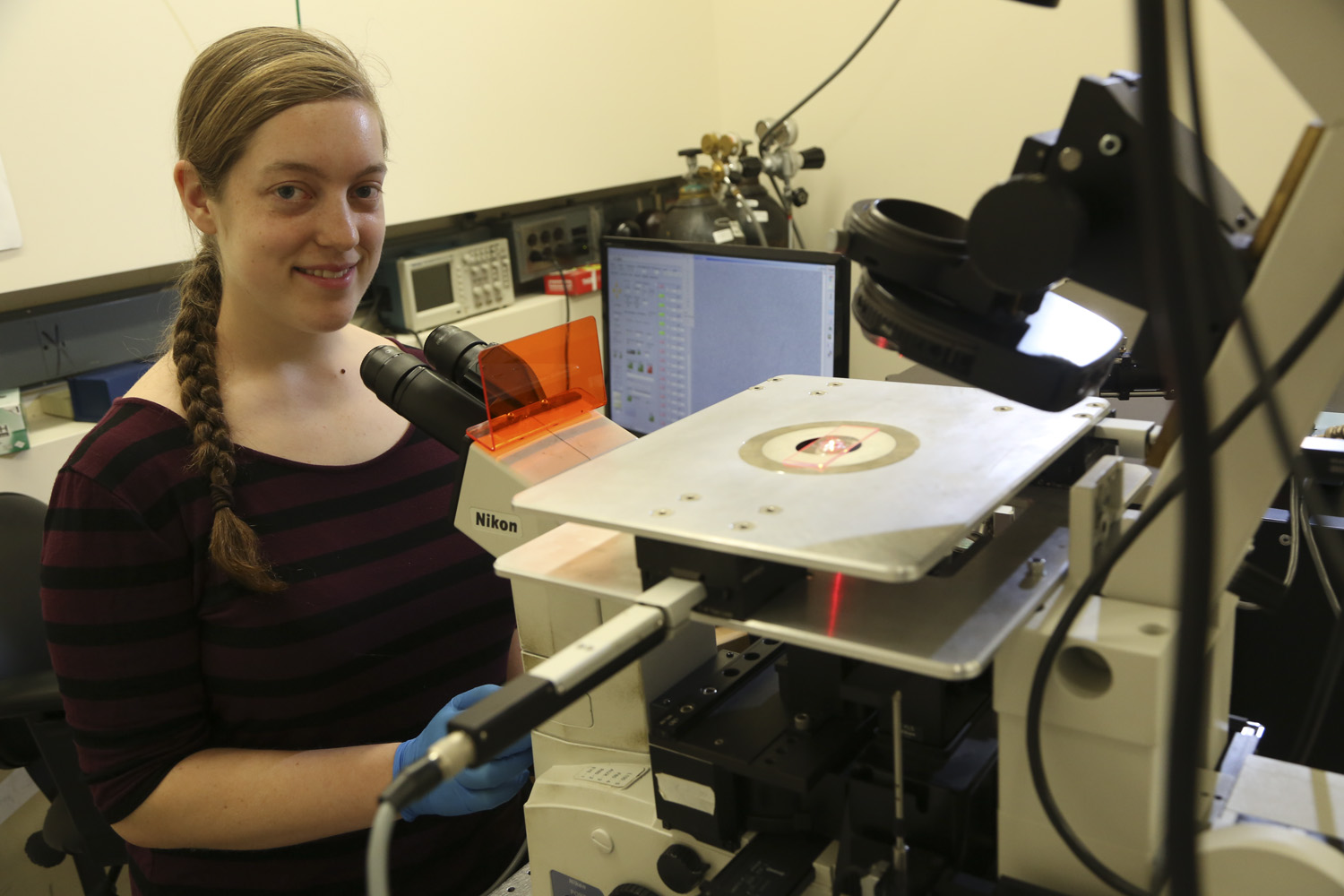Margaret Morris

“Elastic Buckling of Rigid Bio-polymers”
Margaret Morris*, Walter Schwenger, Feodor Hilitski, Zvonimir Dogic
Brandeis / Mathematics, Physics
Hosted by Dogic's Lab
Abstract
Bio-polymers play an important role in many critical processes in organisms ranging from providing structural rigidity to motility. In this experiment we examine the buckling properties of rigid rod-like flagella. Experiments with rod-like bio-polymers like flagella and microtubules tend to assume these filaments behave as Eulerian rigid rods. Euler’s theory predicts that as a rod is buckled, the force required to buckle it further increases as buckling becomes more extreme. In previous experiments, our lab has found that this is not the case with microtubules. Microtubules become easier to buckle when they are extremely bent. We now explore the buckling properties of flagella, which are made of microtubules, to see if they behave as microtubules or as Eulerian rods. We use laser tweezers to buckle flagella. We attach beads to either end of a straight flagellum taken from Salmonella. Then using optical tweezers, we compress the filament until it buckles. For small forces, bead displacement from a laser trap scales linearly with force, allowing us to find a relationship between applied force and degree of buckling.
Our initial results suggest that force required to bend flagella increases with increased buckling. So unlike microtubules, flagella follow the trend predicted by Euler’s theory. We will continue testing this for different lengths of flagella. Because flagella behave as classical rods, our experiments will also allow us to determine persistence length of flagella through mechanical means.
Support
SMURF (Summer MRSEC Undergrad Research Fellowship

